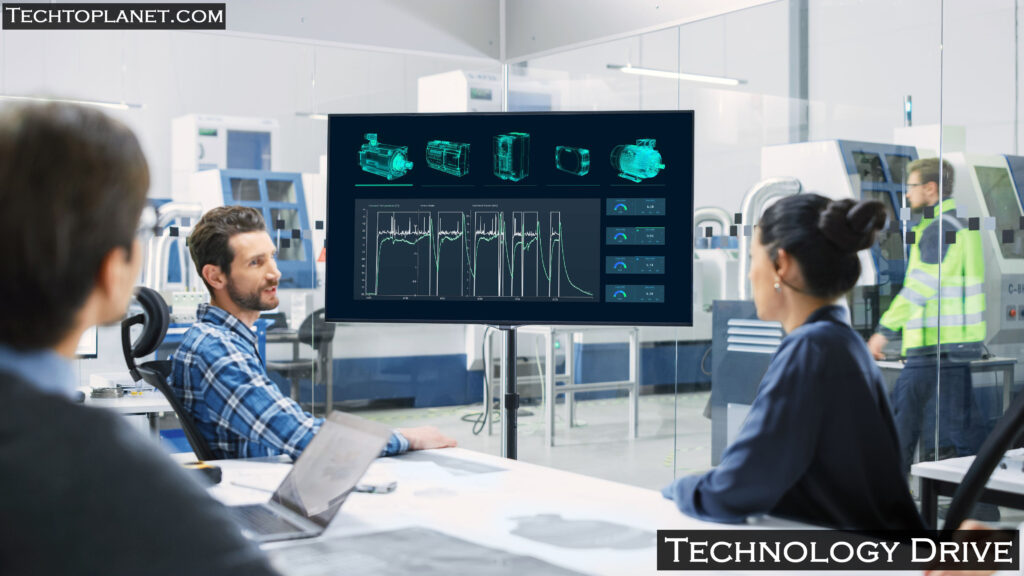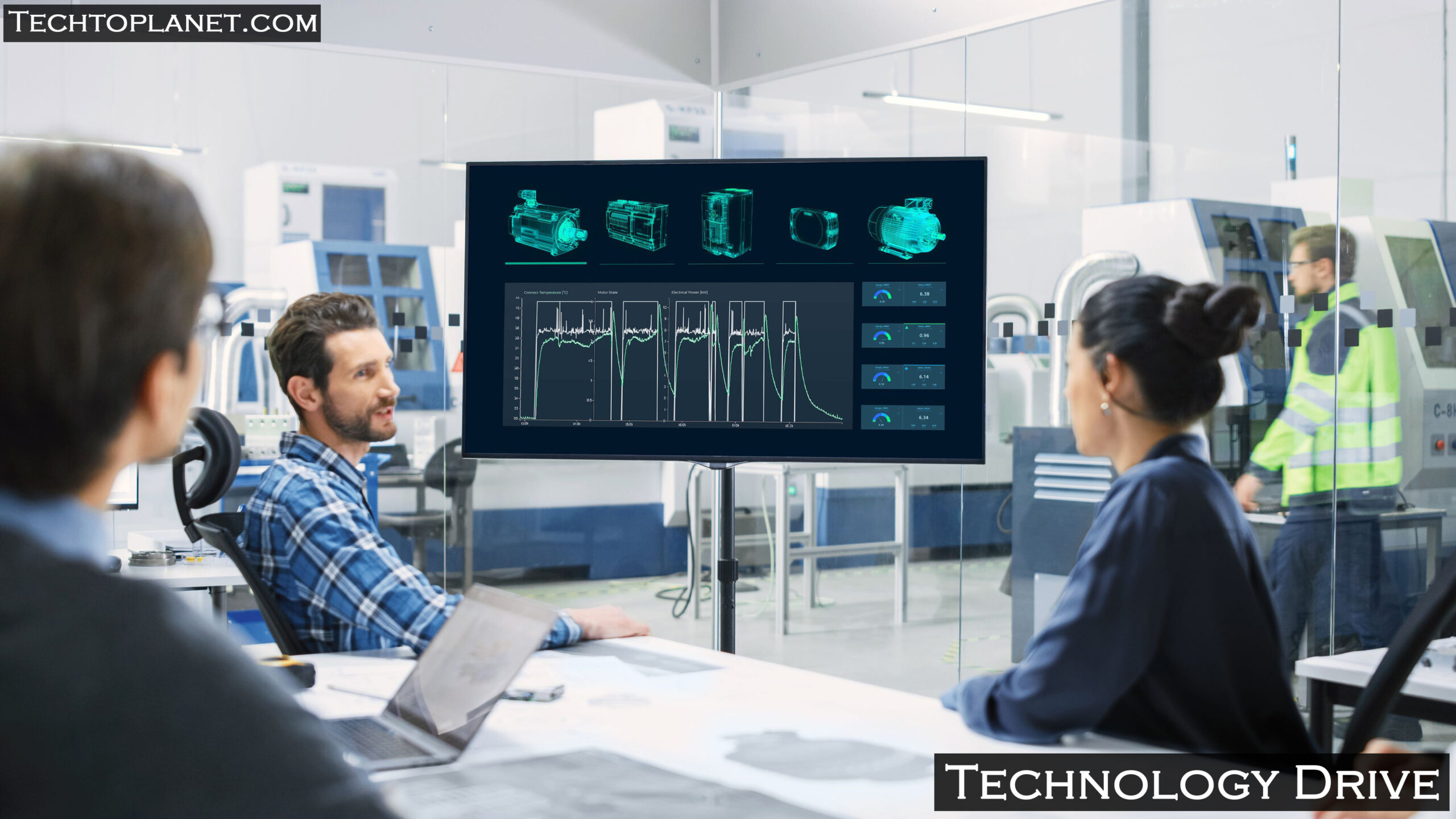Today, on average, the world has received improvements in Technology Drive that cannot be compared to any other years. Technology ranging from AI and clouds to block chains has continued to advance rapidly changing industries, businesses and societies. Technology drive is one of the major forces that banks upon, and is a major determinant of future technology across nearly all aspects of the human endeavor.
This article critically defines a technology drive, its elements, its impact on different industries, and society. We will also look at the future perspectives of this technological revolution and answer some of the most frequently asked questions connected with it.
What do we mean by Technology drive?
The term ‘technology drive’, implies Europeanisation of an upgrade of the application, diffusion and adoption of new technologies into the several fields of existence of human activities or business. This drive is defined by sustained innovation research as well as development with a view of enhancing efficiency, productivity and quality of useful life. The drivers of this technology drive include speed, automation, and finding IT solutions to various issues that cut across the globe, such as environmental issues such as climate change, and health crises such as Covid-19.
Great advancements in technology have led to accelerated adoption of new technologies across industries which has created a war of innovation. This movement has popularised the use of technology in business among various governments, organisations and individuals and is helping in spreading new technologies based business models and services.
Four Elements of a Technology Drive

1. Artificial intelligence (AI) & Machine Learning (ML)
AI and machine learning technologies may well be leading the pack so far as technology drive is concerned today. These technologies enable a machine to be able to learn from data, infer or decide and even act autonomously on what used to be exclusive human domains. It is in use as the building blocks of self-automated vehicles, diagnosis and patient care in medical analysis, and a host of other scenarios in which superior decision support is being sought and achieved.
AI has subcategories among which is machine learning and is used in for instance finance, marketing, customer services, etc. Other AI systems are going to be developed to learn capability from data patterns, which enhances systems and processes in the long run.
2. Cloud Computing
The technology drive has been mainly driven by the expansion of the cloud computing experienced in the current society. Cloud computing means information technology services that are accessed through the Internet rather than through an organization’s own computing resources. This technology has elements of scalability, flexibility and low operating expenses; in this respect, it is a core constituent in either a startup or a large venture.
Current cloud services like AWS, Azure, Google Cloud have been on the rise in e-commerce, finance, software engineering industries among others. Increased efficiency and a safe means of sharing and working in real time with other businesses have become possible due to cloud computing.
3. Blockchain Technology
Originally used for the development of cryptocurrencies such as Bitcoin, blockchain has turned out to have further uses. There lies a capacity to disrupt diverse markets because this decentralized database has the capacity of introducing transparency and security in several operations crossing sectors, including supply chains, monetary exchange, and identification services.
This drive by technology drive has made the use of the blockchain in other fields such as health where patient data have to be shared securely, and voting where fraud prevention is crucial. Blockchain is believed to be the solution to enhance the level of trust and responsibility in those processes that involve multiple players.
4. Internet of Things (IoT)
IoT stands for the Internet of Things which refers to a number of objects connected with one another and exchanging information over the internet. The Internet of things is taking reality to another level, ranging from home automation all the way to the Industry 4.0 concept. Its wearable devices, IoT smartwatches and smart fitness trackers and smart appliances that make a lifestyle easier are just a few of the examples.
It is still the case today that IoT is expected to disrupt means of production and alteration of such industries as manufacturing, agriculture, healthcare and logistics through centralization of data collected to enhance operational efficiency.
5. 5G and connectivity advancements
Technological advancement is the third factor led by the roll out of the 5G network is another critical factor that is enriching the facet of technological advancement. They will also enable new applications as well as young technologies including self-driving cars, smart buildings and structures, and augmented reality (AR) solutions to operate efficiently.
But as connection grows richer and the channels for addressing clients expand, the potential for new solutions increases as well. Many sectors including telecommunications, entertainment, and healthcare that require a fast communication system are already today benefitting from the 5G technology and growing user experiences.
Technology Drive’s Impact on Industries
1. Healthcare and Medicine
Prominent among the areas of application of the technology drive is the area of health. New technologies such as artificial intelligence and data analytics have enhanced patient care, diagnosis of diseases, and tailor made treatments through such devices as wear. For instance, algorithms are currently being applied in diagnosis of diseases involving images and accurately identifying diseases such as cancer.
Also, there is an increased use of telemedicine especially after the COVID-19 times, where patients can interact with the doctor through a screen which eased the workload in the hospitals. The combination of robotics, artificial intelligence and the internet of things is expected to transform surgeries, physiotherapy, and healthcare status check.
2. Manufacturing and Automation
Manufacturing industries have over the years embraced automation as a key element to enhancing productivity while at the same time cutting on costs. RPA technology, smart machines and appliances, and sensors are already redesigning the conventional manufacturing structures into smart manufacturing systems.
Automation assists in alleviating problems involving human interference and saves time besides meeting market needs more keenly. In addition, the use of digital twins which are the digital copies of objects in physical space helps organizations to keep tabs and model activities then predict challenges and improvements.
3. Finance and Banking
The technology charge has also significantly shifted the finance industry more so with the introduction of the fintech solutions. Financial organisations benefit from current blockchain technology that scales up the speed and security of financial operations, applying Artificial Intelligence and Machine Learning in individualised services and fraud prevention.
Other types of innovations are also changing how people and companies handle money, including digital payment, robo advisors and P2P lending services. AI is becoming integrated into more ways of providing banking services and helping customers with faster and more effective options, including chatbots and AI-driven financial counselling.
4. Education and E-Learning
Technology drive has triggered a total revolution in education in many parts of the world. The use of e-learning platforms, virtual classrooms and use of core services in teaching classrooms and collaborative tools has enhanced the access to education of people in different parts of the world. This has been of high significance especially during the COVID-19 outbreak which enhanced the online classes.
New technologies such as AR and VR are shaping the methods of learning making it possible for students to have an immersive experience as they try learning new concepts. AI is also used to provide differentiated instruction, as a curriculum must be anchored at the level at which most students in a given class are at.
Conclusion
This Technology Drive revolution is beyond doubt leading to the formation of the organizational and societies advancement. Due to advancements in artificial intelligence, blockchain technology, cloud services, IoT, and 5G networks industries are growing at a faster pace than has ever been witnessed. These technologies are not only benefiting business but also making life easier to be lived for people.
As we proceed further in this technological evolution, the strategy will remain future ready, open to change and deploying new technologies to solve problems of the future. Despite the ever accelerating speed of change, the lucky individuals that can effectively use the power of emerging technologies are likely to continue to reap the benefits of being in the vanguard of the emerging revolution and to continue to build this better and connected world.
Frequently Asked Questions to do with the Technology Drive
1. Where does artificial intelligence fit in the technology push?
Technology drive is also propelled by artificial intelligence where machines can learn from the data, make decisions and do things that require intelligence to do. AI is changing the face of industries including healthcare, finance and manufacturing through enhanced decision making, individually tailored service and process enhancement.
2. In What ways has Cloud Computing affected businesses?
Cloud computing has brought forward efficient and flexible opportunities to adapt within the businesses when it comes to data storage, application hosting as well as collaboration. They have enabled organizations to perform services and acquire data from a distance, cut geographical design expenses and cooperate across geographical locations.
3. What might be its advantages?
There are several advantages of implementing blockchain technology such as; increased transparency and security as well as an increased ability to track back transactions. They are commonly used in sectors like fiscal and financial, medicine and pharmaceutical, and supply and logistic, thus adding credibility and responsibility in distributed systems.
4. What role does 5G play in the technology advance?
5G is a real technological revolution – with the endeavors towards increased Internet speed, lowered latency and improved number of connected devices. Such enhancements are relevant to applications, such as autonomous vehicles, smart civic infrastructures, and visualization technologies such as AR and VR.
5. Search dysfunctional IoT
Internet of Things aptly known as iOT is revolutionizing Industries by making devices ‘intelligent’ and more responsive through inter-device connectivity. It facilitates real-time information acquisition and processing contributing to the optimization of several industries including health, production, supply chain, and farming.

